It’s been many years since I learned the ins and outs of percentages, ratios and parts. I get plenty of practice playing with them though since almost every day is a soap day around here (lucky me!). It is one of the more common questions that our stupendous team gets whenever soapers are trying to calculate parts (whozit? whatzit?!), resize batches or try to figure out if they have too much (or too little) coconut oil in their recipe.

Usage Rates
One of the most common places you see percentages and parts is in product usage rates. For example, let’s say you wanted to add some extra lip-loving power to a lip balm by adding Green Tea Extract. The usage rate for this extract is no more than 3%. If you wanted to add this extract to 4 oz. of Lip Balm Base, how would you go about it?
The answer comes through some nifty multiplication. You would simply multiply the percentage (3%) times the total amount of base (4 oz.). The resulting equation would look like this: .03 x 4 = .12. Since your base was measured in ounces, the resulting answer is also in ounces. It’s such a tiny amount that you may find it easier to convert it to milliliters and then use a dropper to add in the extract. Here is a good conversion calculator. According to the calculator, .12 oz. is equivalent to 3.5 milliliters.
The great thing is this formula applies to any and all products with a given usage rate. Preservatives, extracts, waxes and other additives general list usage rates that way.
Parts
Another common soapmaking term is “part.” This is also the same as a ratio. You might see this sometimes when mixing colorants (“add 1 part Brick Red Oxide to 3 parts Electric Bubblegum to get Bramble Red,” for example). Sometimes it helps to have a visual, so consider the photo below:

In this photo, the whole circular soap is comprised of 1 part yellow soap, 1 part fuchsia soap, 1 part orange soap and 1 part green soap. Another way to say that is that each color represents 1/4, or 25%, of the circle.

Here the soap circle is comprised of 2 parts green soap, 1 part fuchsia soap and 1 part yellow soap. Another way to say this is the green soap represents 50% ( or 1/2) of the circle while the fuchsia and yellow soap each represent 25% (or 1/4) of the soap.

Finally, the circle is now comprised of 3 parts green soap and 1 part fuchsia soap. This also means the green soap is 75% of the circle (or 3/4) and the fuchsia soap is 25% (or 1/4). As you can see, parts can easily convert into percentages or fractions. But what if the numbers aren’t so clean?
Let’s say you’re working with a scent blend that calls for 2 parts Black Pepper Essential Oil to 3 parts Litsea Essential Oil. You’re making this blend to scent an 18-bar Birchwood Mold. Since the 18-bar mold holds about 6 lbs. of soap, you’ll need about 4.2 oz. of essential oil (.7 oz. per pound x 6 lbs of soap = 4.2 oz of essential oil). You could go about it this way:
You know the total number of parts involved is 5 (2 parts plus 3 parts). To start, divide the total amount of essential oil by 5. That works out to equal .84 (4.2/5 = .84). That number is the multiplier that will help you translate the “parts” into actual numbers.
In this case, 2 parts Black Pepper x .84 = about 1.7 oz. Likewise, 3 parts Litsea x .84 = 2.5 oz. To double check yourself, add those amounts and see if they equal the total amount of essential oil you calculated earlier. In this case, they do! 1.7 + 2.5 = 4.2, which means your calculations check out.
Percentages
Percentages are also important, particularly when working with cold process recipes. Take the recipe in the Beginner’s Guide to Cold Process, for example. Instead of listing the recipe in ounces, it’s listed in percentages:
30% Palm Oil
30% Coconut Oil
30% Olive Oil
10% Sweet Almond Oil
This is so the recipe can adapt to any size mold. It doesn’t matter if you’re making it in a 10″ Silicone Loaf Mold or the 36-Bar Birchwood Mold, the ratio of oils will be the same no matter the size of the batch.
In this case, let’s go with the 10″ Silicone Loaf mold. According to the website, it holds 50 ounces of soap. This is where the Lye Calculator comes in handy. Simply input the percentage amount into the calculator, select the “percentage” button on the calculator, and then enter the oil weight. For a 50 ounce recipe, your oils will weigh about 34 oz. Select a superfat of 5%, and the calculator gives you the following results: 3.4 oz Sweet Almond Oil, and 10.2 oz. of Coconut, Olive and Palm oils. Note about superfat: Typically Soap Queen recipes are superfatted at 5%, but your superfat all depends on personal preference. You can read more about superfat here.
A quick note: Oil weight is not the same as yield. Often times, you’ll know the yield but not the oil weight. I know water makes 35% of my soap batch – but if you don’t want to do the math- the lye caluculator makes it easy In the event you didn’t know the oil weight for a 50 oz. batch of soap was 34 oz., you could have simply entered the yield in the oil weight box. Then, you could use the Resize Batch option on the next page to keep resizing the oil weight until the yield equaled 50 oz. It’s the non-math way to figure this out.
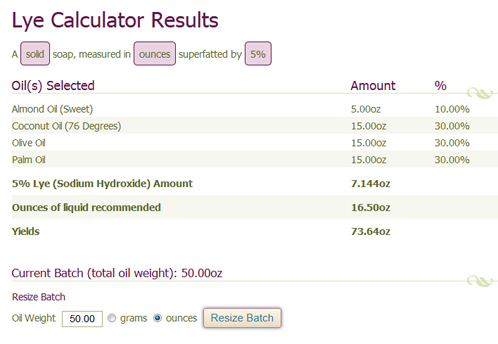
The Lye Calculator result if you enter 50 oz. as the oil weight. Notice the yield is about 74 oz., which is way too big.
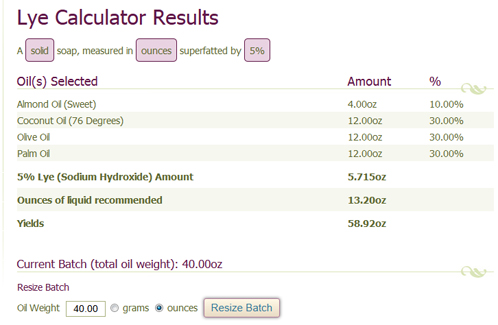
After using the Resize Batch button with an oil weight of 40 oz. Notice the yield is now about 59 oz., which is still too much.
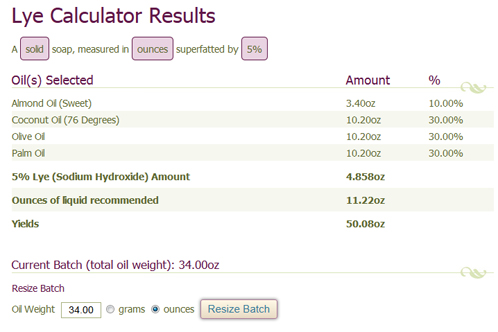
When you resize the batch to include a 34 oz. oil weight, the yield is almost exactly 50 oz. Just right!
So there you have it — a mini refresher on soapy math. Do you have any mathy shortcuts or tips that make your soaping sessions easier?

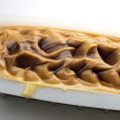
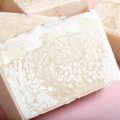
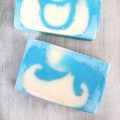
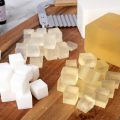
Hey guys!
I’m new to making coffee scrubs and have been reading and reading on here about phenonip and I realize it is the preservative I need to use but I am so lost on how much I need to mix with Glycerol.. Can someone please help me out. I am am using 3 cups of coffee grounds, 1/2 cup coconut oil and then a teaspoon each of brown sugar and sea salt. No water. But I realize some water will get into it in the shower.
Please help guys.
Thank you thank you!
Hi Brittney!
Preservatives are recommended for products that contain water, like lotion, and products that may get water splashed in them during use. Because scrubs are often kept in the shower and will likely get water in them, we recommend a preservative to be on the extra safe side. 🙂
Read more about preservatives here: http://www.soapqueen.com/bath-and-body-tutorials/lotion/talk-it-out-tuesday-preservatives/
We recommend using Phenonip at .5-1% of the weight of the recipe. For instance, if you’re making a 10 ounce scrub, you would add .1% of the Phenonip. Because your recipe is measured by volume, it is a bit more tricky to calculate. I would recommend putting your scrub on a scale to see how much it weighs. You can find scales online, at a kitchen supply store, a department store like Target, or on BrambleBerry.com. Then, you can determine how much Phenonip to add from there. 🙂
Read more about weight vs. volume here: http://www.soapqueen.com/bath-and-body-tutorials/tips-and-tricks/a-guide-to-weight-vs-volume/
-Kelsey with Bramble Berry
Scales: https://www.brambleberry.com/Scales-Thermometers-C207.aspx
I use many recipes. I store them all in the lye calc within the BrambleBerry iPhone app.
I just finished making many homemade wood molds. I know how to calculate volume.
Now for the question
Let’s say I am using BrambleBerry recipe called ‘Old Faithful’
Let’s say I am using It is 14.00 x 2.25 x 3.125 which is 98.4375 cubic inches when filled all the way to the top.
Is there a formula used by soaping Pros, so that I can get a rough starting point for the batch size weight in ounces?
As a side note I have read on many websites that I should take the 98.4375 and multiply it by .40. For this example the would total 39.375. I am not confident that this is a good method ( because I have also read about using .37 and .55 as a multiplayer)
I am also unclear if the 39.375 oz by weight is the oils or the oils + water + lye
Thanks for all you do!
Hi DJ!
When it comes to calculating how much a mold will hold, you can use water! Pop that mold on a scale, zero it out and pour water to the brim. That will give you a rough estimate of how much your mold will hard. Soap is more dense than water so it will be slightly different, but it’s a great place to start.
Then, when you make your soap, make a little extra just in case. Weigh it once it’s in the mold to find out exactly how much it holds for your batch.
I’ve found this method is easier than the formula for volume (especially because I’m not that great at math!) 🙂
-Kelsey with Bramble Berry
Awesome post! Percentages and conversions can be so confusing, especially in the beginning. Thanks for all of the great tips!
I totally agree! Hopefully this clears things up though 🙂
When changing a recipe and adding an additional recipe should the .12 added be subtracted from the water phase to maintain 100%
Hi Santasha,
Extracts are not factored into the water or oils in a recipe. They are simply extract additives 🙂 If you are changing the recipe, the amount of extract you’d need to use would also change! Do you have a recipe in mind you’re working on? I’d love to help you out!
Nice article here about calculations. One thing that I would point out is in the beginning, you mention converting oz to ml. This conversion is true if you are considering fluid oz, not oz (weight). The only time a fluid oz is equivalent to an oz (weight) is if you are considering water. That’ s because the density of water is equal to 1 g/ml–you can use this as a conversion factor to covert from a mass (or weight) to a volume. Anything else would be slightly skewed if you are trying to convert a weight into a volume (oz to ml) due the different densities of the oil/liquid/etc. in question. To make the point clearer, consider palm oil-if we have an ounce of this oil, is it equivalent to a fluid ounce? No, because it’s density is roughly 0.89 g/ml:
1 oz oil x 28.3 g/1oz x 1ml/0.89g x 1fl. oz/29.57ml = 1.08 fl oz.
It’s a small difference, yes, but consider large batches of cp soap or the likes. Maybe just one of my residual irks from when I taught chemistry but I can remember woeful incidences from the lab about folks forgetting the proper conversion factors!
I should have added that even with water, it’s not exactly 1 oz to 1 fl. oz-do the calculation and it’s slightly off!
Hi Addy,
Great catch, and that’s a very good point!
We only recommend converted ounces to milliliters when the measurements are very small. Some extracts have 1 – 3% usage rates, which results in teeny-tiny amounts. In that instance, it may be easier for some soapers who don’t have super precise scales to convert that amount to milliliters so they can use our handy droppers!
We would never recommend the conversion for larger batches, and we always measure in ounces by weight for the most accurate measurements 🙂
OMG Anne-Marie – this is SO WONDERUL! Thanks!!! I am totally going to print this out and stash it in my file.
Me too
Great! I am very happy to hear that 🙂
So glad you find it helpful, Michael! Happy soaping 🙂